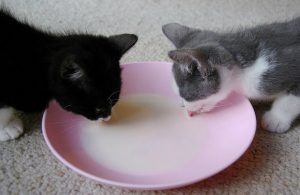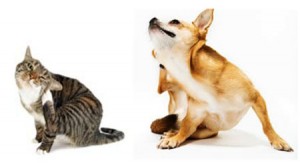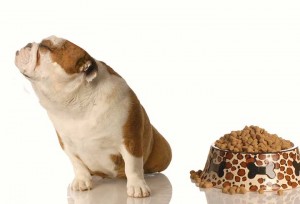Posts Tagged ‘veterinary care’
Urinary Tract Health For Your Cat: How To Avoid Pee Problems
 Do you know why cat owners bring their pets to visit the veterinarian? If you answered for vaccinations or well pet visits, then you would be correct. However about 5 to 10 percent of the visits are due to the cats suffering from a disease called Feline Lower Urinary Tract Disease (FLUTD). Urinary tract health for your cat is extremely important. The most common clinical signs presented at the appointments will be that the cats are having litter box problems. Either they are urinating outside of the box or that they are spending too much time in the litter box longer and having trouble or a painful urination process.
Do you know why cat owners bring their pets to visit the veterinarian? If you answered for vaccinations or well pet visits, then you would be correct. However about 5 to 10 percent of the visits are due to the cats suffering from a disease called Feline Lower Urinary Tract Disease (FLUTD). Urinary tract health for your cat is extremely important. The most common clinical signs presented at the appointments will be that the cats are having litter box problems. Either they are urinating outside of the box or that they are spending too much time in the litter box longer and having trouble or a painful urination process.
Feline Lower Urinary Tract Disease affects both sexes, and affects the bladder and urethra. Small, sharp crystals form in the bladder and irritate the lining of the cat’s lower urinary tract. As the crystals mix with more debris and blood, it can plug the urethra and prevent the cat from having the ability to urinate. Due to male cats having a narrower and longer urethra, they are seen more often and it tends to be a medical emergency.
The crystals that form contain Magnesium. One theory to explain the formation of the crystal is that some cat foods are high in minerals or ash. This seems logical, however it has not been reproduced by feeding high ash/magnesium diets to normal cats. Some pet food ash is necessary, but cheap cat foods are often higher than they should be.
Another possibility for the occurrence is the cats don’t drink enough water and crystals tend to form in more concentrated urine. However, like the food, it has not been able to be reproduced. So there may be other factors at work causing FLUTD.
The average cat is 3 to 4 years old when the signs begin. It is uncommon for cats under 1 ½ years of age to present with FLUTD. Older cats can present with FLUTD, but it is usually due to an underlying health or stress problem. For some reason, the Persian breed is more susceptible to the disease.
As stated before, the first thing that the owner will notice is that the cat is spending too much time in the box or urinating outside of the box. Careful examination of the litter or urine can reveal some blood in the urine. The cat may appear painful and their penis may be extended and bluish in color.
If there is no or very little urine with your male cat, then this should be considered a medical emergency. He needs to be seen by a veterinarian as soon as possible. If medical attention is not given, he may die in a short period of time due to kidney failure. Urination is how the body cleanses itself of toxic products. It is also important to keep the balance of minerals and water in the body. If the cat cannot urinate, then he will become depressed and the body systems will start to fail. When urine backs up in the kidneys, this can cause irreversible kidney damage. If left untreated, FLUTD can be fatal in 3 days.
When presented to your veterinarian, the cat’s bladder may be enlarged and painful. The urethra and penis may be swollen, so it will be important for the veterinarian to break down the blockage with as little trauma as possible and establish a urine flow from the urethra. A lot of times, the cat must be sedated in order for a traumatic passage of a catheter. Intravenous fluid therapy is usually indicated to restore the electrolyte imbalance and to flush out the blood toxins that had built up due to the blockage. Antibiotics are usually given to prevent more severe infections. Due to the urethral swelling, sedative and pain-relieving medications are sometimes indicated to help relax the cat’s urethra until the acute inflammation passes.
Most commonly, veterinarians will prescribe medication for your pet which possibly would include antibiotics and changing the cat’s diet. They may even prescribe feeding canned food over dry food to entice more water consumption. Other medications may be prescribed to reduce stress and pain. Sometimes FLUTD can recur. Under some instances, surgery may be needed to prevent blockage again. There are some complications that can occur because of the surgery though.
FLUTD can be a complicated and serious condition if not attended to. It is important to contact your veterinarian should the problem arise. As always, if you have any questions, please feel free to contact here or call us at (618)-656-5868.
Tips For Welcoming A New Kitten Into Your Family
 With the holiday rush over, a new resolution may include the family getting a new pet. Are you considering a new kitten? Don’t just jump in and figure it out. A little planning goes a long way. It is not that easy getting a new pet and adjusting the pet to its new environment. It is important to prepare yourselves and your home for your new family member, so I have compiled a list of helpful tips.
With the holiday rush over, a new resolution may include the family getting a new pet. Are you considering a new kitten? Don’t just jump in and figure it out. A little planning goes a long way. It is not that easy getting a new pet and adjusting the pet to its new environment. It is important to prepare yourselves and your home for your new family member, so I have compiled a list of helpful tips.
When choosing your new kitten, it should be a family affair and everyone should be involved in selecting your pet. You may want to spend some time with potential kittens to choose the one that would be the best fit. This would include getting the kitten out of the cage and find an area where you can spend some time with it. Some may be real friendly, however some may be very scared and require some time to warm up to you. This will also give you time to find out as much information as possible about the pet and a glimpse of its personality.
Once you have selected your pet and are taking it home, it is best to purchase a kennel to transport it home in. Remember, this is really stressful time for your new pet and it may be really scared. I recommend placing a towel or pillow in the carrier to make it more comfortable. When you arrive home, it may be best to sit on the floor and let it come to you. Just let it get acquainted on its own terms. If it doesn’t approach, leave it alone and try again later. Ideally, you will want to take it slow with introducing it to other family pets, so you may want to restrict access to them.
Getting your home ready is very important as well. This may include readying a small space like a bathroom for your territorial pet. Cats love small places, so you may want to put a kennel or box so that the kitten may hide. You will want to kitten proof your home by securing drapes or blind cords out of reach and picking up small items that they can possibly ingest. It is important to remove poisonous plants and insect traps and make sure that all cabinets are closed so that they can’t become exposed to harmful household items.
As your pet becomes more adjusted, it may want to explore outside of its safe haven. Make sure that other pets or family members won’t startle it while it expands its territory. The kitten may be ready to play so make sure that you have plenty of toys to keep it entertained.
Cats need to wear their claws down, so it is important to have something that is socially acceptable to scratch on. There are many scratching posts available that will do the trick nicely.
Make sure that it has fresh food and water. Feeding the food that the pet was accustomed to at the shelter will help prevent diarrhea from an abrupt change. When placing the food bowls, make sure they are a good distance from the litter box.
Within a week of bringing your pet home, I would recommend that you schedule an appointment with your veterinarian to make sure that your pet is healthy. Bring all the records that you have so that your veterinarian can make his recommendations.
Congratulations! If you follow these tips, you’ll be on your way to having a well-adjusted family member. By all means, if you have any questions about your pet, please don’t hesitate to contact us. My team and myself would be more than happy to answer your questions.
Stocking Stuffers For Your Pet
It is that time of year when we are trying to find that perfect gift for everyone on our list, and that includes our pets. So to help Santa with gift ideas, I have decided to suggest some different stocking stuffers for your pet to assist you during the hustle and bustle.
For Cats
 Catnip Chocolate Covered Strawberries — These are handmade fleece strawberries that are filled with catnip to give your four-legged friend a charming respite from its fast-paced world. These are available at Uncommongoods.com and sell for $18.00. You may also try the catnip fortune cookies or the squeaky dog donuts made by the same manufacturer.
Catnip Chocolate Covered Strawberries — These are handmade fleece strawberries that are filled with catnip to give your four-legged friend a charming respite from its fast-paced world. These are available at Uncommongoods.com and sell for $18.00. You may also try the catnip fortune cookies or the squeaky dog donuts made by the same manufacturer.
Organic Pet Grass/Cat Grass Kit with Cat Grass Planter —This is a natural hairball remedy which the juices contain Folic Acid, an essential vitamin, that assists in the production of hemoglobin. It also provides fiber which aids in the reduction of hairballs in your cat. This product is sold on Amazon by the Cat Ladies.
House of Cat Marbled Alpaca Wool Felt Cat Toys —From the House of Cat Etsy shop comes these hand made ping pong sized balls that are a hard plastic core that are covered with layers and layers of soft natural alpaca wool. They are bouncy and great for throwing around and chase or just swatting.
 Knit Mohawk Cat Hat — Also found at the House of Cat Etsy shop, this is for the cat that loves to play dress-up or the owner that is willing to get their eyes clawed out. The hat features two slits for the ears.
Knit Mohawk Cat Hat — Also found at the House of Cat Etsy shop, this is for the cat that loves to play dress-up or the owner that is willing to get their eyes clawed out. The hat features two slits for the ears.
Handmade Wand Cat Toys —Beautiful well made wand toys. High quality natural material and designs that include some interesting features that look like they would be enticing to cats. These can be found on Hauspanther.com.
For Dogs
 Silly Dog Toys —From Uncommongoods.com, these wacky dog toys of a mustache and giant tongue are made of non-toxic solid rubber and are attached to a rubber ball. Dogs like it and they are fun and tough!
Silly Dog Toys —From Uncommongoods.com, these wacky dog toys of a mustache and giant tongue are made of non-toxic solid rubber and are attached to a rubber ball. Dogs like it and they are fun and tough!
Best of Breed Glove Brush —This rubber mitt prevents shedding and massages away dirt and hair with its flexible soft rubber tips. It gently massages your pets including dogs, cats, horses, pigs, goats and more as it cleans. The mitt is available on Amazon.com.
Ruffwear Quencher Collapsible Food Bowl — From Ruffwear.com this lightweight collapsible bowl made of long lasting polyester outer fabric with a waterproof liner is a packable dog bowl to take on your trip with your four-legged friend. They are lightweight, durable and don’t take up much space.
K9 Konnection Flashing Bright LED Safety Lights — With this bright LED light, you can easily spot your pet as the safety lights constantly flashes blue, white, green and red lights. They are easily clipped to your pet’s collar or leash and keep your pet safe. Available at Amazon.com.
Dog Hammock Seat Cover —This durable protective seat liner for the back bench seat of your vehicle provides protection to your seat cover and safety to your pet. It helps keep your car clean. It is available through Amazon.com and is manufactured by BarkNPurr Purfect.
Hopefully this will give you a starting point to start shopping for your “furr-babies.” Please keep your pet safe throughout the holiday season and if you have any further questions or comments, please don’t hesitate to contact us here at the clinic.
Breed Spotlight: Nova Scotia Tolling-Duck Retriever
 Sometimes I will get a call at my office asking for advice which breed of dog would be the best for a client’s family. There are many breeds out there and many of the breeds have characteristics that may or may not be a good fit for that particular family.
Sometimes I will get a call at my office asking for advice which breed of dog would be the best for a client’s family. There are many breeds out there and many of the breeds have characteristics that may or may not be a good fit for that particular family.
Anyway, I thought that this month I would highlight a breed that is not very well known in the dog world. It has only been recognized as a breed in the AKC since 2003 and is the 170th most popular breed. That breed is the Nova Scotia Duck Tolling Retriever. This breed’s odd name comes from its ability to lure ducks within shooting range by “dancing” on the shore, a technique known as tolling. The native Indians of Nova Scotia admired a fox’s ability to entice ducks this way, and they taught their dogs this behavior.
It was a unique ability, but wouldn’t it be nice if the dog could also retrieve? So that is what happened. The breeders started with the Micmac Indian dogs and skillfully blended some Golden and Labrador Retrievers, Chesapeake Bay and Flat-Coated Retrievers, a little Cocker Spaniel, Irish Setter and a touch of Collie. When they were done, they had created a small, enticing red-haired dog with boundless energy and amazing intelligence. It was called the Little River Duck Dog for many years, but in 1945 its name was changed to what it is today.
The Nova Scotia Duck-Tolling Retriever is like a deep-chested small Golden Retriever that has a dense coat and is well insulated for swimming in cold water. Their coat is various shades of red and orange and usually have small white markings on the feet, chest, tail tip and face. The powerful compact, well-muscled body is on sturdy, solid legs.
These dogs are extremely intelligent, easy to obedience train, and good with children. They make good companion dogs as long as they get enough exercise to fulfill their energetic needs. Due to their compact size and intelligence, they do well in agility competitions. Their compact size also makes them ideal for condo or apartment living.
Tollers may be a bit more reserved to strangers than the Golden Retriever, so start at an early age to socialize them with people and other dogs.
Health wise they tend to be pretty healthy. Conditions seen in the breed include hip dysplasia, patellar luxation, eye disease such as progressive retinal atrophy, Addison’s Disease and hypothyroidism. Not all conditions are detectable in a growing puppy, and it is hard to predict whether a puppy will be free of these maladies, so it is important to find a reputable breeder to assure that steps have been taken in the breed to minimize the occurrence of these conditions.
The Nova Scotia Duck-Tolling Retrievers are happy wherever they are – whether it is in the confirmation ring, hunting, or watching a movie. They are able to go from couch potato to bounding retriever in mere seconds. They like new experiences and are easy to take traveling. This breed learns wicked fast and they remember things that are important to them. They will never cease to amaze you. When you look into your Toller’s eyes you can see their intelligence and you know they love you – or maybe they are hungry, or want outside, or you have hidden the ball again. So if you want a dog breed that will never give you a dull moment, you may want to consider a Nova Scotia Duck-Tolling Retriever.
If you have any questions about this breed, or any other breed, please don’t hesitate to contact our office.
Caring For A Pet With Cancer
 As pets get older, owners tend to know when our pets are not feeling well or when a lump suddenly “pops” up on our pet. After visiting your local veterinarian, he may give you the words that you do not want to hear—it may be cancer. While the diagnosis can be devastating and painful to hear, it is important to remember there are many different forms of cancer and not all are viewed as terminal.
As pets get older, owners tend to know when our pets are not feeling well or when a lump suddenly “pops” up on our pet. After visiting your local veterinarian, he may give you the words that you do not want to hear—it may be cancer. While the diagnosis can be devastating and painful to hear, it is important to remember there are many different forms of cancer and not all are viewed as terminal.
As with any illness or sickness, it is best to detect cancer at its earliest by bringing your pet in for regular veterinary check ups. Between examinations, it is best to monitor your pet for signs of cancer and schedule an appointment if any clinical signs appear. These may include:
- Abnormal bumps, lumps and swelling on the body
- Sores that will not heal
- Unexplained weight loss or appetite changes
- Bleeding from any body opening
- Unpleasant odor
- Difficulty urinating or defecating
- Persistent lameness
- Drooling or any sign of mouth discomfort
If you suspect that your pet has cancer, it is very important to have as much accurate information as possible for your veterinarian when treating your pet. It is essential to have an accurate diagnosis and your pet’s cancer correctly staged. This will help your veterinarian determine how advanced the cancer is and what possible success rates are for various treatments. Your veterinarian may recommend diagnostic procedures like laboratory tests, biopsies, x-rays, ultrasound or even surgical exploratories.
If perhaps we have a diagnosis of cancer, the goal is to provide your pet with the highest quality of life as long as possible. Dogs and cats tend to tolerate chemotherapy and radiation very well. When side effects do occur, your veterinarian can prescribe anti-nausea and pain medication, as well as nutritional support to keep your pet comfortable during treatment.
With some cases, we may come across cases where the cancer is advanced and your veterinarian may recommend palliative care only. This means that your pet’s veterinary team will keep your pet as comfortable as long as possible and not pursue more aggressive treatments. The primary goal is to maintain the best quality of life possible for your pet.
When dealing with cancer, it is important to watch your pet closely for signs of discomfort and pain and keep your veterinarian informed. Keep all follow up appointments scheduled and stay in contact with your veterinarian. We are here to help. It is also important to spend as much time as possible with your pet and provide a quiet, comfortable place to rest and sleep. Providing nutritional support and fresh water are also important. You may need to make access to an area for your pet to urinate and defecate because of the cancer treatments. Above all, enjoy the time that you have left with your pet.
During the course of treatment, your pet may start having more “bad” days than “good” days. When you feel that you have done all that you can do for your pet, it may be time to consider euthanasia. It is not a time to feel guilty about any decisions you make. This is a difficult decision as most owners weigh not seeing a pet suffer against a desire to not deprive the pet any more “good” days. When this time comes, be sure to communicate with your veterinarian. Communicate your pet’s medical status and learn what to expect in the days and weeks ahead. Talk to your veterinarian and find out what options are available for your beloved pet in case euthanasia is needed to alleviate the discomfort of your pet.
Don’t live under a cloud of doom and fear. It is best to live life to its fullest. We all live in the “Circle of Life”. Don’t waste the “life” part. Remember there is always hope and it is best to take one day at a time and appreciate the life that is left in your pet.
For more information, or questions and concerns, don’t hesitate to contact our office.
Separation Anxiety: Helping Your Pets When The Kids Go Back To School
 Pets and humans have much in common. One characteristic of both is that they can suffer from anxiety, specifically separation anxiety. During the back to school season, pets can experience this distress when your children leave for school and their owners leave for work. The alone time can be scary for pets, causing separation anxiety. Some pets will become agitated while their owners are preparing to leave, trying to stop them from going. Usually, right after a guardian leaves, a dog will begin barking and displaying other behaviors of distress after a short time of being home alone – often within minutes. When the owner returns, the pet may act as though they haven’t seen the guardian in years!
Pets and humans have much in common. One characteristic of both is that they can suffer from anxiety, specifically separation anxiety. During the back to school season, pets can experience this distress when your children leave for school and their owners leave for work. The alone time can be scary for pets, causing separation anxiety. Some pets will become agitated while their owners are preparing to leave, trying to stop them from going. Usually, right after a guardian leaves, a dog will begin barking and displaying other behaviors of distress after a short time of being home alone – often within minutes. When the owner returns, the pet may act as though they haven’t seen the guardian in years!
When treating a dog with separation anxiety, the goal is to resolve the pet’s underlying anxiety by teaching the pet to enjoy, or at least tolerate, being alone. This is done by setting things up so that they experience being alone without the fear or anxiety.
Some common signs of separation anxiety include urinating, defecating, barking, howling, chewing, digging, destruction, escaping, pacing, and coprophagia; when a pet eats some of their own excrement. The pets may or may not perform these behaviors in the presence of their owners.
There is no conclusive evidence of why pets develop this kind of anxiety. Some situations have been found as triggers for pets, showing they have anxiety. These are a change of guardian or family, a change in schedule, a change is residence, or a change in household membership; this is the sudden absence of a resident family member due to death or moving away.
It is important to rule out some medical or behavioral problems. These can be caused by incontinence, medications, submissive or excitement urination, incomplete house training, urine marking, puppy destruction, excessive barking and howling, and just plain boredom. The dogs with these problems often don’t appear anxious. If your pet shows these symptoms, there are plenty of online resources that will help, or you can contact your veterinarian.
A pets’ anxiety can be mild to severe. Treatment for mild separation anxiety can reduce or resolve the problem. Counterconditioning is a treatment process that changes an animal’s fearful, anxious or aggressive reaction to a pleasant, relaxed one instead. It is done by associating the sight or presence of a feared situation with something really good, something the pet loves. This may be their favorite treat, toy, or delicious food. Over time, the pet learns that being alone brings good things. To develop the good association, every time you leave the house, you can offer your pet a puzzle toy stuffed with food that will take them 20-30 minutes to complete. A great brand for this is KONG. You can stuff it with something tasty such as low-fat cream cheese, spray cheese, low-fat peanut butter, frozen banana and cottage cheese, even canned dog food and kibble. KONG toys can be frozen, to extend the amount of time it takes to getting all of the food out of the chew toy. This only works if these toys and treats are only available during time the owner is around and if they are only mildly anxious. Highly anxious pets usually won’t eat when their owners are not around.
Moderate to high separation anxiety requires a more complex program to desensitize their fear. You can read more on these programs on ASPCA’s website.
It is important to ensure that your pet never experiences the full-blown version of whatever provokes their anxiety. Your pet must experience only a low-intensity version that doesn’t frighten them. Without doing this, they won’t learn to feel calm and comfortable in situations that upset them. This all means that during your and your pets’ desensitization process, your pet cannot be left alone except during their sessions. If possible, take your pet to work with you. Ask for a family member, friend, or hire a dog sitter to stay with your pet while you are away.
While away, crates can provide a safe place when left alone. However, with some pets, crates cause more stress and anxiety. Crates do require training, and you should monitor your pets’ behavior during the training.
Other ways to decrease your pets’ stress include mental and physical ways to keep your pet busy. Some activities include aerobic activity, interactive games, walks, and reward-based training classes. Medication may help some dogs; to find out, contact your veterinarian.
Lastly, NEVER scold or punish your pet due to anxious behaviors. They are simply distress behaviors.
Separation anxiety is something that can be scary for owners and pets. Using the above methods can reduce their fear of being alone during the day, allowing them to look forward to the end of the day – when their owners come home!
Pets And Fireworks: How To Keep Your Pet Safe & Calm
 Oh, the joys of summer! For most of us, we look forward to celebrating the 4th of July with friends and family. For a lot of us, that usually involves fireworks. While enjoyable for people and pyromaniacs, the loud booms and bright flashes of the fireworks may not be enjoyable to our pets. A dogs hearing is ten times more sensitive than that of a human, so one can only imagine how loud and terrifying it can be to your pet. To help with reducing the fear and anxiety of your pet to the fireworks celebrations, I recommend the tips.
Oh, the joys of summer! For most of us, we look forward to celebrating the 4th of July with friends and family. For a lot of us, that usually involves fireworks. While enjoyable for people and pyromaniacs, the loud booms and bright flashes of the fireworks may not be enjoyable to our pets. A dogs hearing is ten times more sensitive than that of a human, so one can only imagine how loud and terrifying it can be to your pet. To help with reducing the fear and anxiety of your pet to the fireworks celebrations, I recommend the tips.
Hartz.com has many methods on calming your dog. One of which is creating a safe area for your dog to stay in for the festivities. Hartz says to remove all objects that could cause harm, make sure his ‘hiding-spot’ is accessible, and close the blinds to stop the bright light from entering his safe haven. Other methods include turning on a TV or radio might help muffle the loud booms, hence hiding the fireworks from your dog. You also should put a water bowl in his room. Dogs are more likely to drink when they are worried. If your dog wines and paces around, let them. They have found their safe spot. Try not to disturb them and don’t punish them for being afraid and having bad behavior.
A lot of people want to take their pets with them to a fireworks show. Do yourself and your pets a favor: LEAVE THEM AT HOME! They may run off in fear. In the rare case that you cannot leave your dog, be sure to have them microchipped and your information up to date if your dog runs off.
You can do some things before July 4 to reduce the amount of stress your dog endures. Add some cooked potato or white rice to their meal that evening. Similar to people, the carbohydrates will make them feel fuller and sleepier, allowing them to be less anxious. You can take them on a longer than usual walk or play a tiring game with them making the sleepier in the night. You can give your dog a massage to relax them, you can cuddle with them and provide distractions whilst the fireworks are shooting off. If necessary, you may want to talk to your veterinarian and have them prescribe sedatives to calm the dog. A ThunderShirt may be a good solution as it has a very high success rate at calming anxious dogs.
Fireworks and dogs almost never mix; if you use these methods, your dog may be calmer and more peaceful during the July 4 festivities that are yet to come. If you have further questions, or your pet has special needs, don’t hesitate to contact our office.
Can My Pet Be Lactose Intolerant?
 Did you know your pet can be lactose intolerant – and why this happens? We all see the commercials and the pictures of dogs and cats drinking milk out of children’s cereal bowls. But just because they eat it, does that mean it is the safe and advisable thing to do?
Did you know your pet can be lactose intolerant – and why this happens? We all see the commercials and the pictures of dogs and cats drinking milk out of children’s cereal bowls. But just because they eat it, does that mean it is the safe and advisable thing to do?
Lactose vs. Lactase
With lactose intolerance, the pets don’t possess the lactase enzyme to break down the lactose, which is a sugar. Lactase is an enzyme that breaks down and helps the digestive system to process lactose. The higher the lactose content, the less likely that your pet will be able to enjoy the aftermath, regardless of how happily it eats, drinks, or laps it up.
Without the lactase, the pet simply cannot digest the milk products and acute intestinal symptoms almost always arrive. These clinical signs can include:
- diarrhea
- abdominal pain
- bloating, nausea
- vomiting
These are all fairly typical indications of gastrointestinal distress. Sometimes a pet will drink excessive amounts of water when suffering from lactose intolerance, since diarrhea and vomiting are associated with it, causing the pet can be susceptible to dehydration.
I know that I will be presented with the argument that puppies and kittens drink mother’s milk at birth and is the primary source of nutrition for them. But as they grow older, their lactase production has decreased dramatically, therefore they do not produce enough to break down the lactose in milk. Another contributing factor is the fact that cow’s and goat’s milk have about twice the amount of lactose compared to a dog’s or cat’s milk. This high level can overpower the pet’s ability to digest it and can often lead to diarrhea.
Even though pets with milk intolerance can exhibit clinical signs, they can, under some circumstances, have some dairy products such as cheese and unpasteurized yogurt that usually have the lactose removed or broken down through bacterial actions. As a result, these products are ofter tolerated well in pets that would otherwise get diarrhea.
The general rule of thumb for pets and dairy products of all varieties is that they need to be low in lactose, low-to-no sodium, and with as little artificial preservatives and sweeteners as possible. If you feel compelled to give your pet a dairy product, do so in small amounts to establish your individual pet’s tolerance. Proceed with caution, and as with anything else, don’t hesitate to contact our office if you have any questions.
What To Look For If Your Pet Is Bitten By A Tick
 With the spring weather rapidly approaching, you and your pet are probably excited to get out and explore the great outdoors. However, lurking in the woods are some old eight-legged nemesis’ that can cause harm to your pets. If your pet is bitten by a tick, it can spread harmful diseases through their bites.
With the spring weather rapidly approaching, you and your pet are probably excited to get out and explore the great outdoors. However, lurking in the woods are some old eight-legged nemesis’ that can cause harm to your pets. If your pet is bitten by a tick, it can spread harmful diseases through their bites.
Each year thousands of dogs are infected with dangerous tick-transmitted diseases-with the risk rising. Between 2006 and 2010 there was a 30 percent increase in the rate of dogs exposed to tick-transmitted diseases.
Ticks are parasites that attach themselves to dogs and cats, feed on their blood and transmit diseases directly into the their system. There are many tick-borne diseases seen throughout the United States. Some of the major tick-borne diseases that are seen in the Midwest include:
- Lyme disease, which is spread by the deer tick, can cause enlarged, swollen and sore joints with a loss of appetite, fever and fatigue. Severe cases can lead to kidney disease and heart disease. There are vaccines that are available for dogs to prevent the dog from getting infected with it.
- Canine ehrlichiosis, Carried by the brown dog tick, this disease is the most common and one of the most dangerous tick-borne disease organisms known to infect dogs. This disease can cause depression, anorexia, fever with stiff, painful joints and bruising. Severe cases may include dogs suffering with seizures. There are no vaccines available. If it is diagnosed, antibiotics are used to help control the bacterial numbers in the dog.
- Anaplasmosis, also called dog fever or tick fever, is transmitted from the deer tick. It is seen in both dogs and cats. Like most of the other related diseases, clinical signs include pain in the joints and fever. Anaplasmosis can also cause diarrhea and nervous system disorders. The clinical signs usually persist about 2 weeks after the tick bite. It is also treated with long term antibiotics.
- Rocky Mountain Spotted Fever comes from the American dog tick, the wood tick and the lone star tick. Symptoms include fever, stiffness, neurological problems and skin lesions. Typically the illness last about two weeks, but serious cases can result in death.
- Babesia is a protozoan organism that is transmitted to dogs and cats from the American dog tick or the brown dog tick. This protozoan then attaches to the red blood cells and causes anemia. Severe signs in dogs include pale gums, depression, dark-colored urine, fever and swollen lymph nodes. Collapse and shock can be seen in severe cases. There are no vaccines available.
- Tularemia is seen more in cats than dogs. With this disease in cats, a high fever, swollen lymph nodes, nasal discharge or abscesses may be seen. Dogs tend to present with a reduced appetite, depression, and a mild fever.
- Hemobartonella is a tick-borne disease that causes the red blood cells to break down leading to anemia and weakness. In cats it is known as Feline Infectious Anemia. Treatment consists of long term antibiotics with blood transfusions possibly necessary in severe cases.
- Tick paralysis is caused by a secreted toxin from ticks. It affects the dogs’ nervous system with weakness starting in the rear legs and progressing to all four legs followed by breathing and swallowing difficulties.
The key to curing tick-borne disease is early diagnosis and treatment. Several broad-spectrum antibiotics are generally effective, especially in the early stages of the disease. Since antibiotics don’t differentiate between the “good” and “bad” bacteria, you may want to add a probiotic to avoid gastrointestinal problems. Be sure to follow the advice of your veterinarian.
There are numerous products and medications available to prevent ticks on your pet over the counter and from your veterinarian. No method offers 100 percent protection. If you have a field dog, they are vulnerable to tick-borne diseases because of the time spent in the tick-infested environment. So owners should diligent about applying topical and systemic treatments before outings. It is important to check your pets daily during the tick season and be removed properly if present. Ticks need to be embedded at least 24 to 48 hours to spread infections, so if checked every day, then the risk of infections being spread are lessened.
Tick-borne disease can rebound rapidly if your pet’s treatment only succeeded in suppressing rather than killing ticks. Since recurring tick diseases are harder to control or eradicate, don’t relax too soon if your pet recovers. Make sure that your pet has recovered completely and give it time to get back to recover completely. To further protect your pet, remain vigilant with regular blood work to detect recurrences.
Finally, to make an informed decision about protecting your pet from tick-borne diseases, talk to your veterinarian about the best tick-control approach for your dog.
How To Conquer Mealtime With A Picky Pet
 Do you have a picky pet? There is actually a difference between a picky and a finicky eater. A picky eater will occasionally refuse to eat and can easily be tempted with a slice of cheese added to his bowl. A finicky eater is a dog that has decided to give up dog food for good.
Do you have a picky pet? There is actually a difference between a picky and a finicky eater. A picky eater will occasionally refuse to eat and can easily be tempted with a slice of cheese added to his bowl. A finicky eater is a dog that has decided to give up dog food for good.
Have you ever wondered why your dog refuses to eat its food? If you give your pet treats or table scraps all day, it may just turn up its nose if you give plain dog food. If you are going to give your pet bacon or steak for breakfast, would you blame it for shying away from just the dog food? Chances are you might just be able to answer your own question by looking in the mirror. By caving in and giving those treats, you may have created a “monster” that becomes finicky or picky.
If there is no disease or illness present, then you just may have a finicky or picky eater. A picky dog will maintain its healthy weight, be alert and playful. It will also have a shiny coat, and is usually not a concern. When it suddenly stops eating, dropped a few pounds, and has a less lustrous hair coat, these symptoms may be a sign of illness or disease. In this situation, I would recommend a veterinary check-up as soon as possible.
So if you just have a finicky eater, here are some ways to persuade it to eat.
- Tone down the treats- A finicky eater is more likely to eat if it is not comparing its dog food to a liver treat.
- Feed often- Try feeding smaller amounts of its regular food three to four times a day. Set the food out for 30 minutes. If it isn’t eaten, pick it up and offer it again later. By doing this, you are helping your dog learn that no other option will exist. Don’t give in! Eventually, your dog will eat if it is hungry.
- Exercise- It is good for so many things and it increases a dog’s hunger. Try always exercising your pup before a meal.
- Spay or Neuter- If you haven’t already, fix your pup. Besides the many health and behavioral benefits, it can help prevent a finicky eater.
- Make it positive- Always make feeding a positive experience. By keeping feeding time positive, the overall experience will also provide positive reinforcement for your pet. Praise your dog when he eats his food and give him attention only after the meal is gone.
- Keep it quiet- Feed your dog in a quiet area without children or other dogs mulling around.
- Try different times- Some dogs eat better in the afternoon, others eat better an hour after you are home. Test it and see what time and situation work best for yours.
- Resist temptations- Try the other tips before giving into the urge to tempt your pup to eat with people food. You’ll find that a few pieces of cooked chicken will perhaps tempt him for a time but he’ll soon grow bored of that too.
Above all, be patient with your dog and watch it closely for signs of illness. Work with your veterinarian or a dog behaviorist if you are concerned about its health. Time, self-discipline, and consistency will do much to cure the finicky eater. Eventually, “my dog won’t eat” will become a thing of the past! If you are still struggling, contact our office so we can help!
